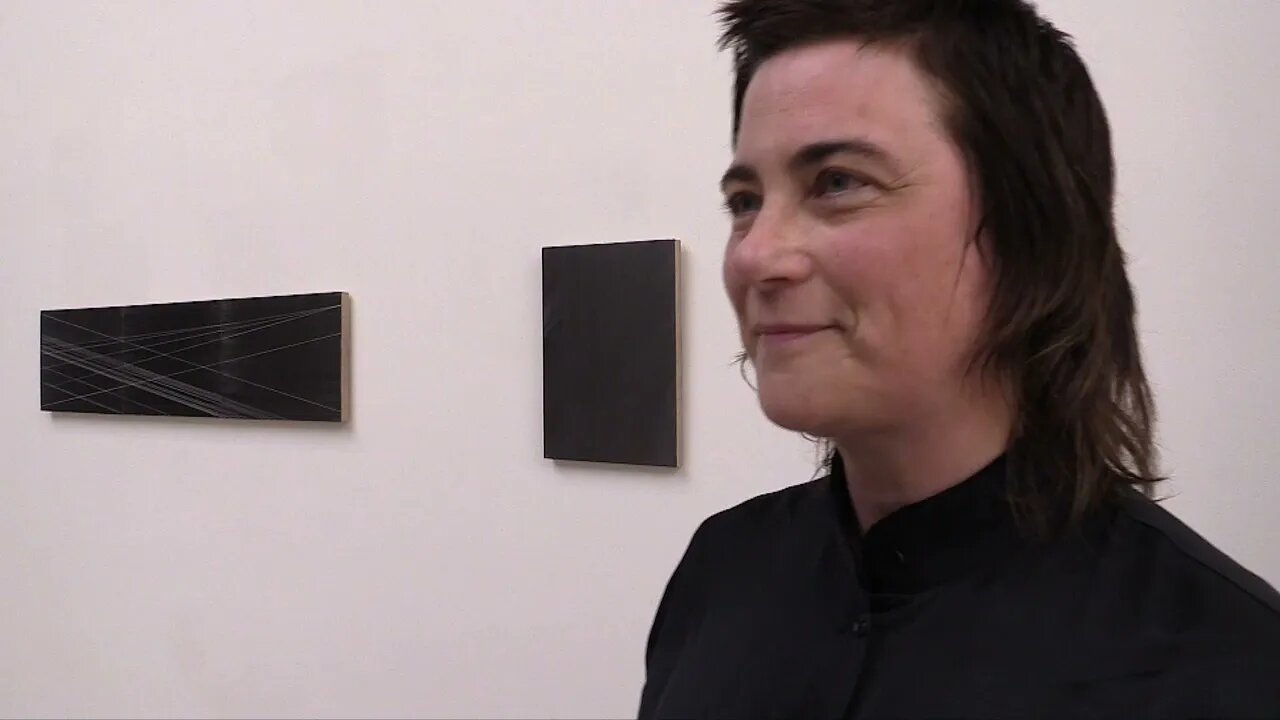Premium Only Content

Mary Griffiths interview | Alan Cristea Gallery, London | 26 February 2019
In Protest and Remembrance at Alan Cristea, with her large abstract works of plywood, acrylic gesso and graphite, Griffiths aims to capture the splendour of the working-class engineering at a former colliery.
Mary Griffiths (b1965, the Wirral) has long been making drawings of (frequently derelict) industrial sites. A year and a half ago, she was introduced to Astley Green Colliery, a former coalmine in Lancashire, which was closed in 1970 and knocked down but for its winding house and headgear – rare examples of 1908 working-class engineering. Spending time at the site, walking around the surrounding geography, reclaimed by nature with trees, grass and mosses, and talking to the volunteers (the colliery is now a museum), Griffiths filled myriad A6 sketchpads with figurative drawings, focusing on aspects that intrigued her, from details of the machinery to a visiting colony of pigeons. From these drawings, she then extrapolated her larger abstract works, made on plywood, with layers of acrylic gesso, and even more layers of graphite, pushed into the board and burnished, before being cut into with an etching needle. Using thousands of straight lines, placed at minutely different angles, she creates an oscillating effect reminiscent of the surface geography of the region. One work, Wild Honey, for example, represents the seams of the coalmine, the waterways and the main roads. Griffiths sees her work as “an identification of the remarkable work that was done in industrial areas” across the country, and it is important to her to capture something of the “gravity and splendour” of the working-class engineering.
Protest and Remembrance Miriam de Búrca | Joy Gerrard | Mary Griffiths | Barbara Walker
Alan Cristea Gallery, London 28 February – 30 March 2019
Interview by ANNA McNAY
Filmed by MARTIN KENNEDY
-
 3:40:55
3:40:55
MyronGainesX
15 hours ago $11.08 earnedFormer Fed Explains Gabby Petito's Murder
40.9K14 -
 2:18:05
2:18:05
Nerdrotic
5 hours ago $6.56 earnedInvestigations into the Unknown with Micah Hanks | Forbidden Frontier #093
48.2K16 -
 18:54
18:54
The Rubin Report
9 hours agoHow One Woman Outsmarted Pornhub & Exposed Its Dark Secrets | Laila Mickelwait
111K92 -
 LIVE
LIVE
Major League Fishing
5 days agoLIVE! - Bass Pro Tour: Stage 3 - Day 4
599 watching -
 1:05:28
1:05:28
Sports Wars
12 hours agoLebron GOES OFF Over Bronny Hate, Pereira LOSES Belt To Ankalaev At UFC 313, Xavier Worthy Arrested
86.7K10 -
 10:27
10:27
Tactical Advisor
1 day agoDMR or SPR for Civilian Use?
88.3K6 -
 8:21
8:21
DEADBUGsays
1 day agoThe Crossbow Killer
85.8K13 -
 8:40
8:40
Tundra Tactical
1 day ago $12.47 earnedThe Executive Order Wishlist.
93.2K6 -
 7:22:52
7:22:52
SpartakusLIVE
1 day agoSaturday SPARTOON Solos to Start || Duos w/ StevieT Later
178K4 -
 28:40
28:40
SLS - Street League Skateboarding
9 days agoTOP MOMENTS IN WOMEN’S SLS HISTORY! ALL THE 9’s - Rayssa Leal, Leticia Bufoni, Chloe Covell & more…
125K11